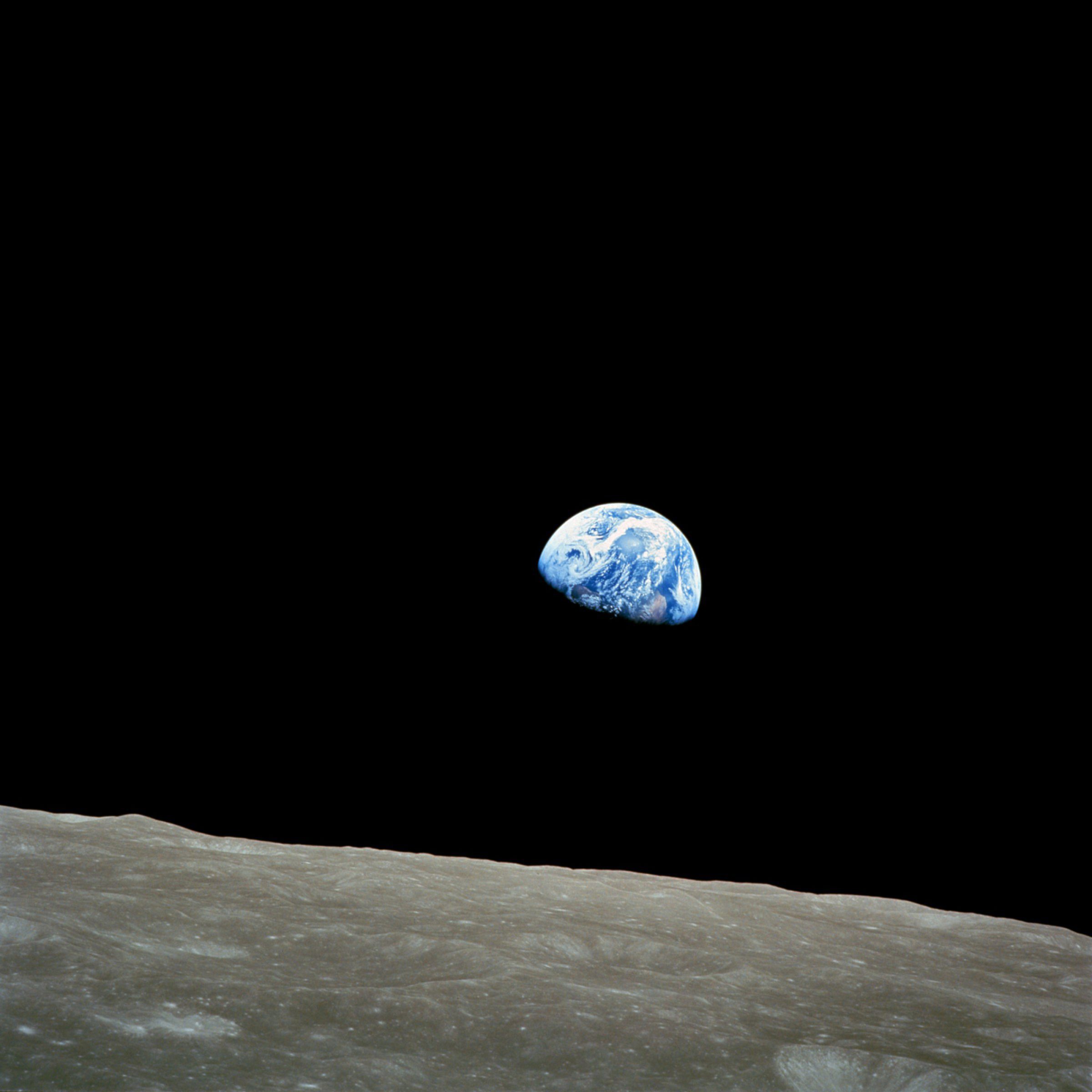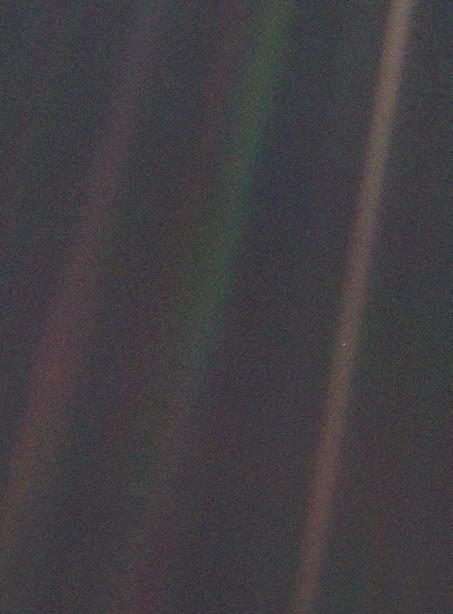Jake Rosenthal • May 13, 2016
Space Exploration: Leaving the Earth to Understand It
It was early morning on December 21, 1968. A Saturn V rocket ascended from its launch pad. The Apollo 8 spacecraft, positioned high above a tail of flame, safeguarded three astronauts, set on a trajectory for the moon. A nation looked skyward. The eyes of the world followed suit. It marked the first time humans left this world for another.
The Apollo 8 mission propelled a crew into lunar orbit for a brief and unprecedented stay. In what were critical steps toward a future landing, they tested spacecraft systems and flight procedures, and visually investigated the surface. During the time in orbit, the moon was copiously imaged, both by the astronauts and automated cameras. To aid in the development of subsequent missions, a potential landing site was targeted. Furthermore, a closer orbit than that of the preceding uncrewed missions allowed for enhanced imagery, revealing previously undiscovered features. The most significant of lunar photographs, however, was unplanned, unforeseen, and perhaps, unforeseeable.
Per the mission plan, during the fourth orbit, the spacecraft was reoriented. It was by chance—owed to the marriage of position and time—that when the maneuver was conducted, a window of Apollo 8 framed a distant Earth, rising above the lunar landscape. Humans then looked back, for the first time, at their home planet. These astronauts had traveled to the moon—what had been, for so long, a destination only in the most imaginative stories and uninhibited dreams. It was never before seen so closely and with such clarity by human eyes. Yet, despite the immensity of their arduous venture, but only made possible by it, the view of the place from where they had come was the most astonishing and poignant sight.

The Earth captivated the crew. At that far-off vantage, any hints of boundaries or demarcations, of nations or states, are imperceptible. We have permeated nearly all reaches of that world; we contest over every piece and assert steadfast command. But from the remote perch of the Apollo 8 spacecraft, neither the wars upon the lands, nor the flags planted in them, are evident. Against the backdrop of desolate space, the Earth unites its citizens in a vibrant display. Pristine, blue waters flow. Clouds swirl and dance. The desert sands and the lush flora interplay and paint the terrain in gradients of green and gold.
That photograph of the Earth, entitled Earthrise, pervaded culture. It was a prominently featured dividend of our first journey to the moon. The image provided a unique perspective and a quintessential catalyst for a heightened global awareness. Along with the planetary portrait were sentiments of unification and inseparability, of dissatisfaction and discontent. The world was fraying, the superpowers, caught in perpetual militaristic embrace; the Earth was weakening, the expanse of industry, infringing upon the habitats of other species and jeopardizing the habitability of the planet. The view of our fragile world forewarns of a severe downfall—because we do not just live on the Earth, but we live with it. As we threaten the Earth and question its future, we bring into question ourselves.
In a whirlwind of ambitions, we went to the moon. We walked the surface a short time later. These expeditions ended a few years thereafter. Yet, the Apollo missions evoked a consciousness of space exploration and galvanized the continued pursuit of goals in space. We set our sights on the planets. Once again, we were to probe new worlds.
The Voyager spacecraft, launched in 1977, were employed to study the outer solar system. Voyager 1 was directed to execute flybys of Jupiter, Saturn, and Titan, a moon of Saturn. Voyager 2 also intercepted the gas giants; an altered trajectory enabled this spacecraft to perform first reconnaissance of Uranus and Neptune.
The spacecraft were assured to function only through their Saturn encounters. Recognizing the uncertain longevity, Dr. Carl Sagan suggested that immediately hence, either or both spacecraft look homeward for a final snapshot. He thought that a picture of the Earth from such a great distance might contextualize our species in the cosmos and further reveal the human circumstance. Many of NASA’s Voyager team concurred; though, turning the cameras to Earth would not come without risk. From the outer solar system, the Earth and the sun are very close in view. If the cameras were to be aimed so close to a bright source, there was a possibility of damaging the equipment. Consequently, the Voyager team shelved the idea.
In 1989, the primary Voyager missions were nearing completion, but the commands to procure the picture had yet to be sent. Knowing that such an opportunity might not come again for decades, Dr. Sagan continued advocating. Still, there was opposition by a few of the project staff because there would be no scientific yield. The decision, ultimately, was that of NASA Administrator Richard Truly. He intervened to ensure that the image was taken.

At last, in February of 1990, Dr. Sagan’s sought-after photograph was captured; Voyager 1 imaged the Earth. It appears as merely an obscure, luminous point. Our planet receives no privilege, no cosmic honor for bearing its distinctive cargo. It is scarcely perceptible—small and out of focus, devoid of any discernible evidence that we exist. From distant space, our world is manifested as nothing more than a faint light, all but consumed by a vast ocean of darkness.
Yet, the minor stature of our planet does not diminish our significance, but rather, emphasizes it. In the history of the Earth, never has a species asserted such dominance as we do now. If we fail to create and uphold respectful relations with our planet and with each other, and this lonely beacon of life is extinguished, only we are to blame. We are of such intelligence as to devise weapons which can devastate life on Earth. That much is clear. But many times we hold our breath and wonder: are we intelligent enough to stop ourselves from using them?
The Pale Blue Dot is a cause for reflection; it forces us to look inward and reconsider our objectives and priorities. From 6 billion kilometers away, our planet may seem tenuous, even inconsequential. But we, as a species and as individuals, are not. Our lives are so deeply interwoven and our societies so technologically capable that the choices we make are often globally impactful. We share one planet, and so too the responsibility to protect it; the duty is not solely that of any one country or people.
We humans, a curious and wide-eyed species, are explorers at heart; our wanderlust is insatiable. The spacecraft we send to the planets and the stars were millennia in the making. They were foreshadowed since our beginning. We sailed our ships to new lands; now we sail our ships to new worlds. On one of those worlds, looming so far away, intervened by what once seemed an impassable distance, there are footprints. Our first steps in East Africa are echoed by our first steps on the moon, and the steps we may someday take across the surface of Mars.
Our potential is great. We can set ourselves on a course to traverse other planets and explore other suns. However, with a lack of care and prudence, we can end where we stand—abandoning the triumphs our species has made thus far. Who we are is owed to all who once were. Who we become is owed to all of us. Whether this time constitutes an end or a milestone for our species is in our hands.
Sources:
Pale Blue Dot: A Vision of the Human Future in Space, by Carl Sagan


 Explore Worlds
Explore Worlds Find Life
Find Life Defend Earth
Defend Earth

